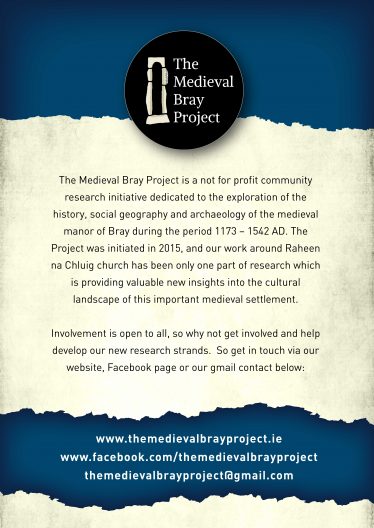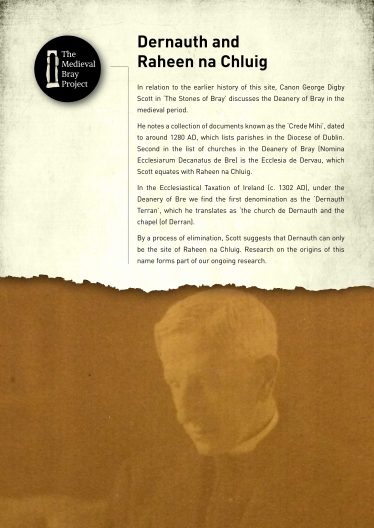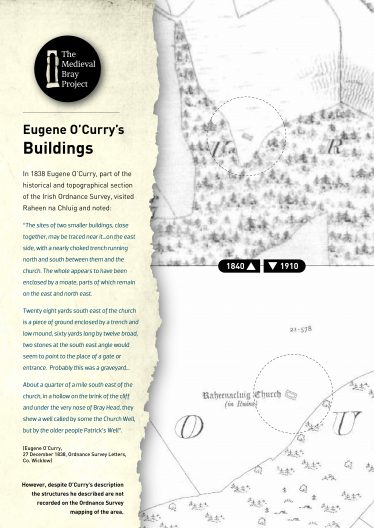Introduction to excavations at Raheen a Cluig






Two community lead excavations were held at Raheen a Cluig Church, Bray Head.
Discoveries
The 2017 and 2018 excavations at Raheen a Cluig revealed three new facets to the historical and archaeological development of the church and its immediate environs.
Possible Neolithic or Early Bronze age Tool Production site
Firstly, the identification of a possible Neolithic or Early Bronze Age tool production site. This adds to the rich prehistoric landscape along the coastal fringe of north Co. Wicklow/south Co. Dublin.
Remains of two ditch features
Secondly, the excavations recorded the truncated remains of two ditch features. One of the ditches is considered to represent the ‘Raheen’ feature referred to in the place name evidence. Further research may indicate if the ditches are concentric, which would provide further suggestion of a previously unrecorded ecclesiastic enclosure.
17th century activity at Raheen a Cluig
The excavations indicated 17th-century activity at the church. This activity may have involved re roofing of the church building using pantile, which is a type of fired roof tile, normally made from clay and domestic activity. Indeed, given that the Down Survey report for Bray in the 1650’s, records the area almost devoid of inhabitants, a reoccupation of the church site in the late 1670s, even with a domestic focus, is entirely possible.
Future research will hopefully confirm the extent of the activities highlighted above, and provide further evidence relating to the construction history of the church.
Post-medieval Ceramic artefacts/shells and animal bone
All spoil generated during the excavations was metal detected as per conditions stipulated within the Ministerial Consent Licence issued in conjunction with these works.
Two ceramic artefacts were recovered which were considered to be post-medieval in date. These and other small finds are described in a separate post on this site.
Heavily truncated remains of a ditch, was recorded. The ditch was filled with a mid-brown sandy clay with stone inclusions. It contained elements of marine shell and terrestrial animal bone. Analysis of the terrestrial animal bone from the may provide further evidence of function and dating for at least that feature.
Further details of excavation




No Comments
Add a comment about this page